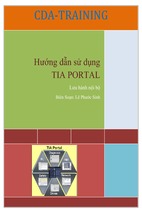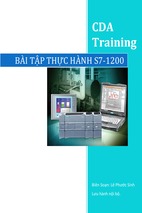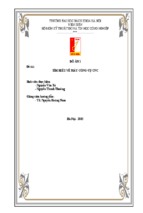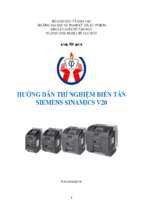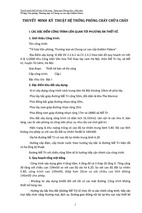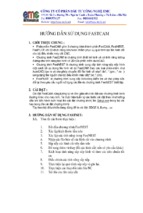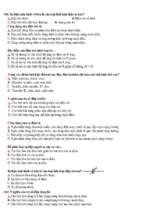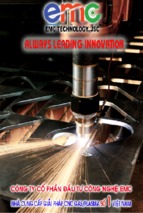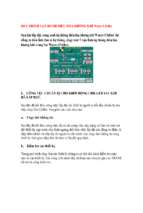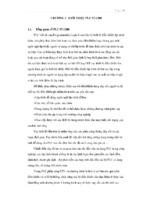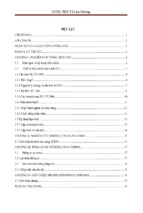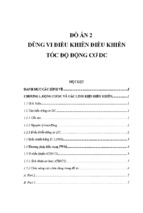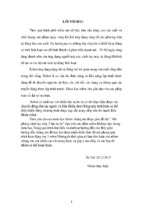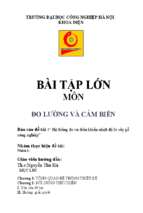Association of Metallurgical Engineers of Serbia
AMES
Scientific paper
UDC: 621.73.077
EXPERIMENTAL OPTIMIZATION OF THE DIE FORGING
TECHNOLOGY OF PLIERS
Sándor Pálinkás*, János Tóth
University of Miskolc, Hungary
This paper was previously presented at
4th International Conference Processing and Structure of Materials
held on Palic, Serbia May 27- 29, 2010
Abstract
It is very important for the industry how to decrease the costs without decreasing
the quality of products by keeping the technology. Both the optimization of material
utilization and the optimization of manufacturing technology are very important in the
course of forging. In order to optimize the material utilization, initial products having
different geometrical shapes can be and shall be planned. Not only the costs of raw
material but the costs of energy and tools can be decreased by saving the material. The
theoretical and practical results can be compared within a short time by the
experimental optimization. The die-forging die and the manufacturing technology are
planned for the optimum samples made as a result of the experimental series. The
method of experimental optimization is widespread when producing small-size
workpieces. This method cannot be used in case of larger workpieces or when alloyed
material-grades are used. In these cases, a computer-simulation model equipped with
physical parameters shall be developed.
Key words: forging, material utilization, optimizing
Introduction
Traditional hand-tools (pliers) are made in Hungary only at the Company for
Manufacturing and Forging Pliers Ltd. in Szeged. In the recent economic situation, it is
very important to choose the suitable initial piece as it influences the costs of basic
materials, the costs of energy and tools. This company is trying to solve the following
problem: How can they decrease their costs by keeping the present, experienced
technology merely by changing the geometrical sizes of initial piece without decreasing
the quality? In our experiment, the investigation of the optimum material utilization
during the die-forging of pliers of given type is described.
*
Corresponding author: Sándor Pálinkás,
[email protected]
158
Metalurgija-MJoM Vol 17 (3) 2011 p. 157-163
The process of manufacturing pliers
The manufacturing process starts with arriving and taking over the basic material
at the site. The basic material is a hot-rolled flat steel of C60 grade with a length of 6 m
that is taken over together with a quality clearance. Then the basic material is cut up; in
the course of this procedure, the initial pieces necessary for forging are made by cutting
them by using an excentric press.
Fig. 1. Initial pieces during heating
Fig. 2. The process of material distribution
The cut pieces are placed in a furnace where they are heated up to a min.
temperature of 1050 °C in accordance with the technological prescriptions (Fig. 1).
After heating, the pieces are die-forged (in two passes). The process of bending and
material distribution takes place in the first pass (Fig. 2) and the process of forging to
shape takes place in the second pass. After the forging procedures, the burring is carried
out by means of which the superfluous material is removed in a hot state. The piece
cools on an open air and a fine ferritic-perlitic structure develops which is very difficult
to machine. The forged piece shall be annealed at a temperature of 650-700 °C with
duration of holding for 24 hours. After heat-treatment, the scale is removed from the
workpieces by an abrasive blasting process then the workpieces are calibrated to their
sizes. The next step is the machining which consists of more successive steps – they are
as follows: boring, countersinking, broaching and edge-milling. After completing the
aforementioned procedures, the workpieces are fit together so that the two half-parts are
clinched. The contour of pliers is shaped in an assembled state then they are edged and
the shank-distance is adjusted. The following step of the manufacturing process is the
improving heat treatment by which the pliers get their prescribed strength. It is followed
by the checking – it consists of the measurement of hardness and the test of shank
loading. It is necessary to perform an induction hardening in order that the cutting edges
of pliers become hard enough. This procedure is followed by the grinding, polishing and
chromating of pliers depending on the requirements of buyers. At last the handle is
attached – these handles shall meet the aesthetic and safety requirements as well.
The planning of engineering piece
The base of planning of the die-forging pieces is the drawing of the engineering
(finished) piece presented by the customer to the forge shop. The forging can be done as
Palinkas et al.- Experimental optimization of the die forging technology of pliers
159
well on the basis of forging drawing or sample made by the customer (Fig. 3).
Independent of the method of order, the surfaces to be machined subsequently (the
surfaces that shall be machined subsequently), the places of clamping necessary for
machining, the place and method of taking samples, the necessary heat treatment
methods as well as the other different conditions of taking over shall be indicated in the
forging drawing [1].
Fig. 3. The engineering samples
The planning of die forging
The technology of die forging is developed as a result of two part-processes of
planning being in relationship with each other. There are two chief elements of planning
the technology: the planning of forged piece and the planning of technology proper (the
method of pre-forging, the determination of the initial piece, the clarifying of the
temperature conditions, the choosing of shaping machine and the planning of die- and
burring tools). The planning of forged piece is influenced to a certain extent by the later
method of shaping, the type and size of shaping machine, etc. It is necessary to know
the forging machine in order to determine the optimum temperature. We should know
the deformation processes taking place in the pass in order to determine the sizes of
gutter (gutter-bridge) however these processes are strongly influenced by the sizes of
the applied gutter bridge. Therefore the planning of technology must not be a
mechanical activity. It is necessary to perform the permanent control. Each part-task
shall be handled as a whole and it is necessary to know the interaction of a lot of factors.
In the course of the planning process it occurs that the planner shall step back one or
two steps of planning, he has to perform the necessary modifications then he has to do
the calculations again by taking into consideration the changed circumstances [3].
The steps of planning the forged piece:
The choosing of dividing plane, the determination of the mass of engineering
piece, the determination of machining and technological activities, the determination of
skewness, the determination of the radii, the determination of the mass of forged piece,
the determination of type and size of gutter, the determination of forging tolerances [2].
Fig. 4 shows the finished forged piece planned after performing the
aforementioned planning steps by using the engineering piece shown in Fig. 3 at the
Company.
160
Metalurgija-MJoM Vol 17 (3) 2011 p. 157-163
Fig. 4. Finished forged pieces
The determination of the initial piece
The size of initial piece shall fully fill the finishing pass in order that suitable
forged pieces can be made. The initial piece (marked by 1) and the forged piece were
sectioned at their characteristic cross-sections along their length then the sectioned areas
were determined as it can be seen in Fig. 5. The calculated areas of cross-sections were
represented in the Cross section [A] – Length [1] coordinate system (Fig. 6). The area
being under the cross-section diagram is identical with the volume of forged piece and
with the volume of initial piece. An exact result can only be obtained by integrating the
curve. The area under the curve was determined by a graphical integration by means of
the Microsoft Office Excel 2003 program.
Fig. 5. The principle of construction the cross-sectional diagram
It is extraordinary important to draw the cross-sectional diagram shown in Fig. 6
in a precise and exact way because the pre-product, the method of pre-shaping and the
sizes of initial piece will be determined by means of it besides the mass of piece [3].
The investigation of the optimum material utilization
The experimental die forging of universal cushion-like pliers of a size of 180 mm
was performed by using initial pieces with different sizes and shapes.
Palinkas et al.- Experimental optimization of the die forging technology of pliers
161
Fig. 6. The cross-section diagram of the forged piece and the initial piece
We used three different kinds of basic materials – they were as follows: a hot
rolled flat steel of a grade of C60 with the following section-sizes: 25x8 mm (width x
height), 22x8 mm and 20x8 mm. We made samples (indicated by 1, 2, 4) with three
different geometrical shapes from the above material. The sample indicated by 1 is the
initial piece used at the Company while the samples indicated by 2 and 4 are our own
design. New initial pieces were planned from the basic materials having a size of 20x8
mm and 22x8 mm (marked by 3 and 5) (Fig. 7). In order to evaluate the experiment
exactly, three samples were necessary from each type – two of them were hit as well.
When planning the samples, it was necessary to choose such a geometrical shape that
the cut can be done without any scrap.
Fig. 7: 3D models of the initial pieces
Further 3 initial geometrical shapes were offered by the Company for the
investigations in addition to the shown samples. The size of sections of these samples
was 25x8 mm.
162
Metalurgija-MJoM Vol 17 (3) 2011 p. 157-163
The demonstration and evaluation of experiments
The experimental initial pieces were made at the Company for Manufacturing
and Forging Pliers. They were manufactured by using a milling machine because no a
cutting tool was available at that time. Naturally, the development of a new cutting tool
would seem to be reasonable depending on the results of experiment. We had a
possibility to follow the manufacturing by using different initial pieces at the Company.
Fig. 8 shows the pieces forged in the course of the experiment-series.
Fig. 8. Pieces forged in the course of the experiment-series
Maybe we could have obtained the highest value of material saving with the 3
samples shown in Fig. 9 (an amount of material saving of about 18%) but the filling of
pass did not realized.
Fig. 9. A 3 sample
Fig. 10. A 4. sample
On the basis of the performed experiments it can be concluded that the highest
amount of material saving could be obtained by using sample 4 shown in Fig 10 (the
amount of material saving is about 13% /piece in this case). The material saving
decreases not only the costs of raw material but the energy consumption decreases as
well at about the same extent. The life of tool also increases owing to the fact that the
size of initial piece is smaller.
Summary
Our purpose was to decrease the mass of initial piece by changing the
geometrical shape of the existing cutting tool by keeping at the same time the existing
Palinkas et al.- Experimental optimization of the die forging technology of pliers
163
engineering equipment and the shapes of passes. In the course of solving this task,
pieces with different geometrical shapes were planned that were manufactured in
operational conditions at the named Company. The ready-made pieces were evaluated
by taking into consideration the prescriptions of forging technology by means of flash.
Proposals were made concerning the question: which type of initial piece planned by us
shall be used during the manufacturing process in order to save material. In the end, an
amount of 13% of material/piece could be saved. In addition to the saving of material,
the energy costs as well as the tool-costs also decreased.
References
[1]
[2]
[3]
Dr. Kiss Ervin: Képlékeny alakítás, Tankönyvkiadó, Budapest, 1991.
Forging Design Handbook. American Society for Metals, Ohio, 1972.
Dr. Szabó László: Süllyesztékes kovácsolás, Sheet from
http://www.uni-miskolc.hu/~wwwfemsz/kovacs.htm
Internet

